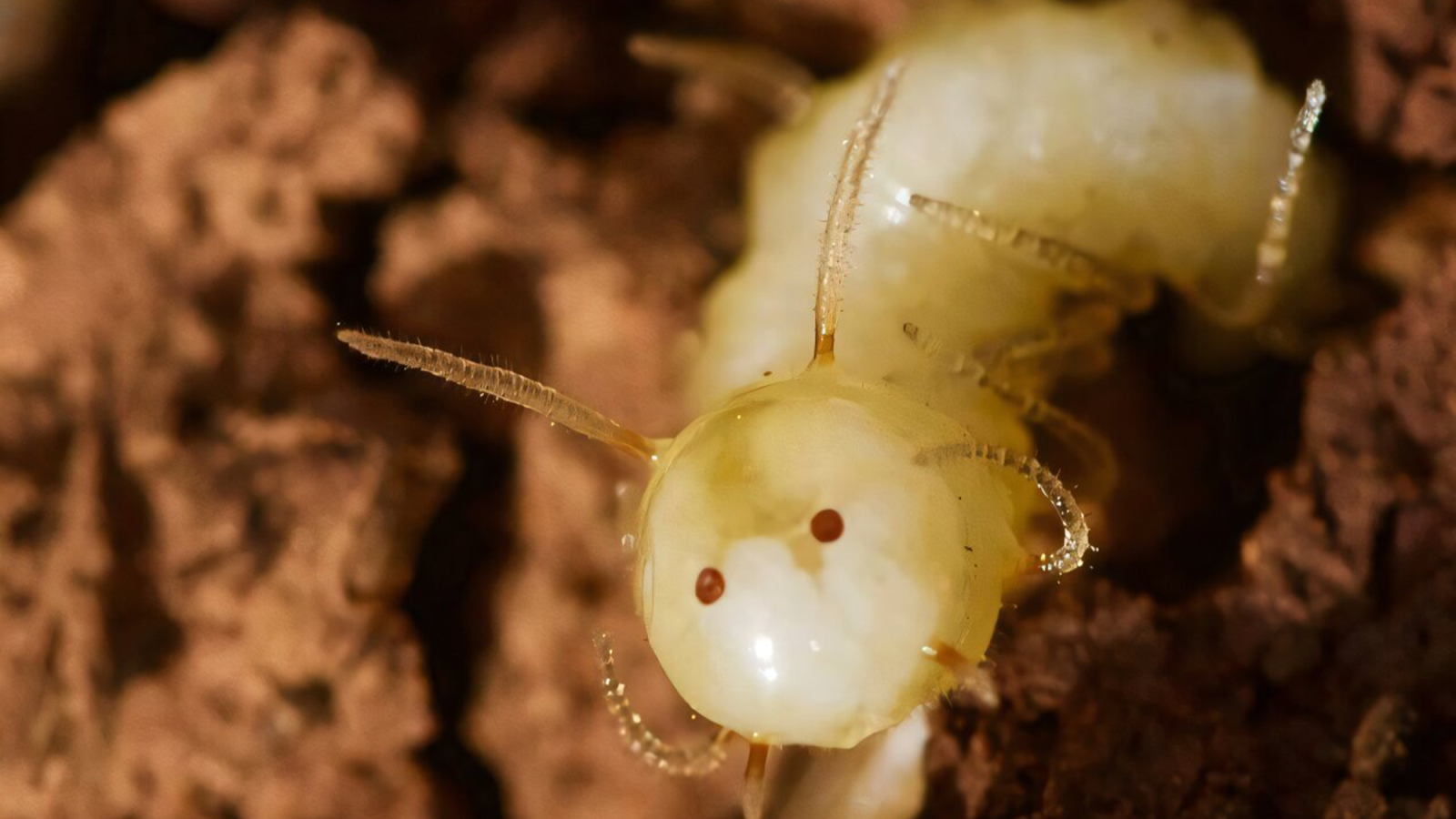This fly larva uses a fake face to deceive termites 🐜
Published by Cédric,
Article author: Cédric DEPOND
Source: Current Biology
Other Languages: FR, DE, ES, PT
Article author: Cédric DEPOND
Source: Current Biology
Other Languages: FR, DE, ES, PT
Follow us on Google News (click on ☆)

A flesh fly larva disguised as a termite, complete with antennae.
Roger Vila
This discovery, published in the journal Current Biology, sheds light on a rare form of social mimicry. Researchers observed that these larvae, likely belonging to a new species of fly, use both morphological and chemical adaptations to live among termites undetected.
An ingenious morphological camouflage
The larvae of this fly, from the genus Rhyncomya, have a unique structure on their posterior end: a "mask" that perfectly mimics the head of a termite. This fake face includes non-functional antennae and palps, as well as respiratory holes resembling eyes. These adaptations allow the larvae to deceive termites, which have limited but functional vision sufficient to detect intruders.
Additionally, tentacles surround the larvae's bodies, mimicking termite antennae. These structures facilitate interactions with termites, allowing the larvae to communicate simultaneously with multiple individuals. This morphological adaptation is essential to avoid being identified as outsiders.
Finally, researchers noted that the larvae often position themselves in the most frequented areas of the colony. This strategy allows them to maximize their interactions with termites, thereby reinforcing their social integration.
A perfect chemical adaptation
Termites primarily use their sense of smell to recognize members of their colony. Fly larvae have therefore developed the ability to mimic the specific odor of their host colony. Chemical analyses have shown that the larvae are indistinguishable from termites, allowing them to avoid attacks by soldiers.
This chemical adaptation is crucial for their survival. Researchers observed that termites not only tolerate the larvae but even seem to feed them. However, the exact diet of the larvae remains a mystery, as does their adult form, as none have survived to metamorphosis in the laboratory.
Moreover, the larvae share slightly different chemical profiles depending on the colony, suggesting a fine adaptation to each group of termites. This precision in chemical mimicry enhances the effectiveness of their infiltration.
To go further: How do insects communicate through odors?
Insects use a sophisticated chemical communication system based on molecules called pheromones. These substances, produced by specific glands, play an essential role in their social life, reproduction, and survival. Pheromones can convey various messages, such as alarm signals, territorial markers, or sexual attractants.
In termites, for example, odor is a key tool for recognizing members of their colony. Each colony has a unique chemical signature composed of several organic compounds. Termites use their antennae to detect these odors, allowing them to distinguish familiar individuals from intruders. This chemical recognition is so precise that it can even differentiate neighboring colonies of the same species.
The fly larvae discovered in Morocco exploit this chemical communication to deceive termites. By perfectly mimicking the odor of their host colony, they avoid being identified as outsiders. This adaptation relies on the production of chemical compounds identical to those of termites, a rare phenomenon in the insect world.
Finally, chemical communication is not limited to social interactions. It also plays a role in food foraging, predator defense, and the coordination of collective activities. For example, ants use pheromones to mark trails leading to food sources, allowing their peers to follow them with precision.